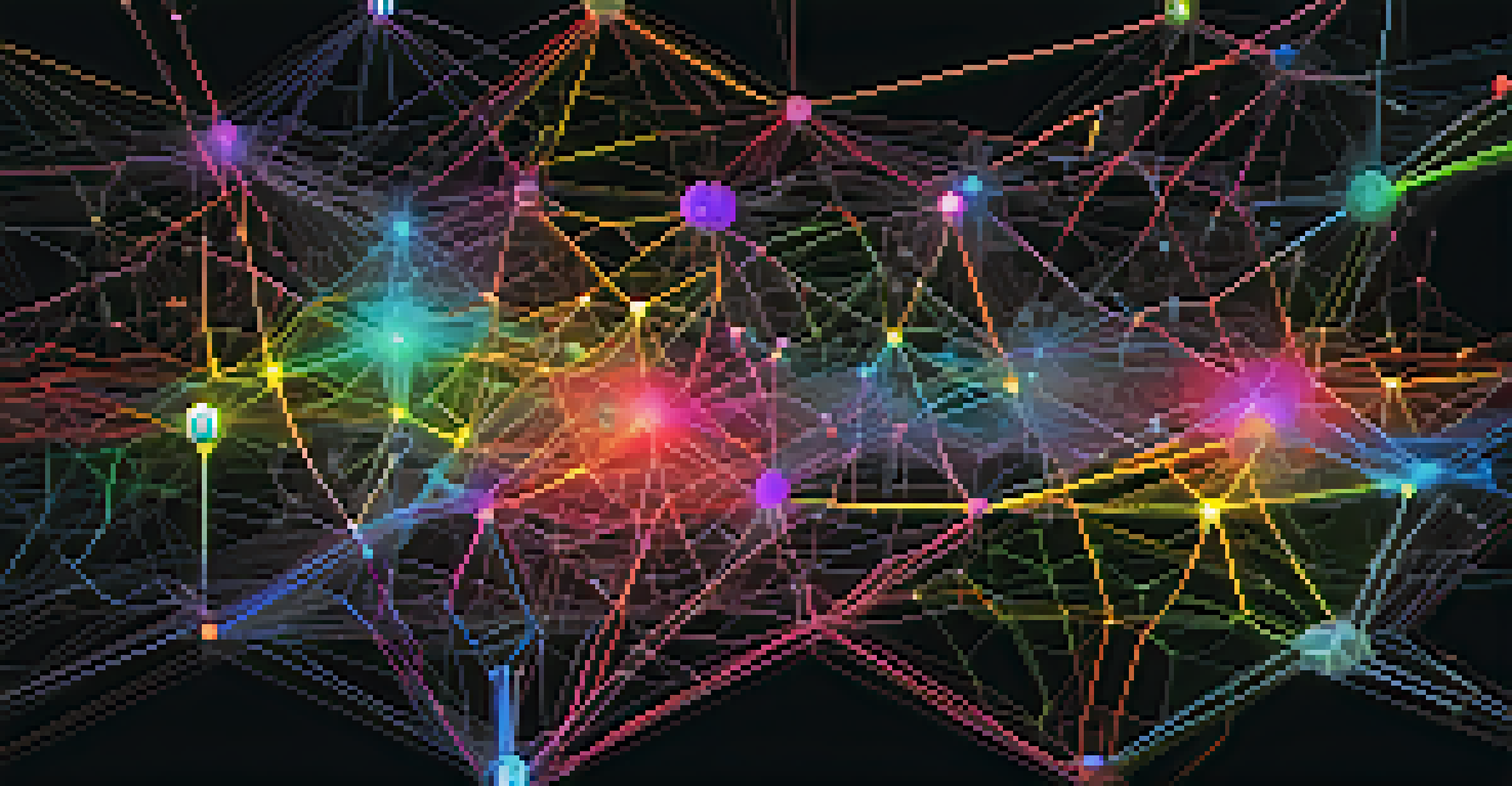The Intersection of AI and Predictive Analytics Explained

Understanding AI and Predictive Analytics Basics
Artificial Intelligence (AI) refers to the simulation of human intelligence in machines designed to think and act like humans. Predictive analytics, on the other hand, involves using statistical algorithms and machine learning techniques to identify the likelihood of future outcomes based on historical data. Together, these technologies create powerful tools that can forecast trends, behaviors, and events.
Data is the new oil.
At its core, predictive analytics is about making informed guesses about the future. For example, retailers can predict customer purchases by analyzing past buying behaviors. When combined with AI, these predictions become even more accurate, as AI can process vast amounts of data quickly and identify patterns that might be missed by humans.
In simpler terms, think of AI as a highly skilled assistant that can sift through mountains of data to find valuable insights, while predictive analytics provides the roadmap for anticipating what might happen next. This synergy is revolutionizing how businesses operate and make decisions.
The Role of Machine Learning in Predictive Analytics
Machine learning, a subset of AI, plays a crucial role in enhancing predictive analytics. It allows systems to learn from data, identify patterns, and make decisions with minimal human intervention. For instance, in healthcare, machine learning algorithms can analyze patient data to predict disease outbreaks before they happen.

By continuously learning from new data, machine learning models improve their accuracy over time. This is particularly beneficial in fields like finance, where predicting stock market trends can lead to significant gains. As these models evolve, they adapt to changing conditions, making them more robust against unexpected variables.
AI Enhances Predictive Analytics
Artificial Intelligence improves the accuracy and efficiency of predictive analytics by processing vast amounts of data to identify patterns.
Imagine teaching a child to recognize animals through repeated exposure to pictures. Similarly, machine learning trains on historical data, enabling it to forecast future events effectively. This dynamic learning process makes predictive analytics not just a static tool, but a continuously evolving one.
Applications of AI and Predictive Analytics in Business
Businesses are leveraging AI and predictive analytics in various ways, from optimizing supply chains to personalizing marketing strategies. For instance, companies can forecast inventory needs by analyzing past sales data and current market trends. This reduces waste and ensures that products are available when customers want them.
The future is already here – it's just not very evenly distributed.
Moreover, AI-driven predictive analytics allows businesses to understand customer preferences better. By analyzing buying patterns, companies can tailor their marketing efforts, making them more effective. For example, Netflix uses predictive analytics to recommend shows based on your viewing history, keeping you engaged and satisfied.
In essence, the combination of AI and predictive analytics empowers businesses to make data-driven decisions that enhance efficiency and customer satisfaction. It’s like having a crystal ball that not only shows the future but also provides guidance on how to navigate it.
Enhancing Customer Experience Through AI and Predictive Analytics
One of the most significant impacts of AI and predictive analytics is on customer experience. By analyzing data from various touchpoints, businesses can anticipate customer needs and preferences. For example, e-commerce platforms can use this technology to recommend products that you may be interested in, enhancing the shopping experience.
Additionally, predictive analytics can help identify potential customer issues before they escalate. Customer support teams can proactively reach out to users experiencing problems, demonstrating that the company cares about their experience. This not only improves satisfaction but also fosters brand loyalty.
Transforming Customer Experiences
AI and predictive analytics help businesses anticipate customer needs and tailor their interactions, leading to enhanced satisfaction and loyalty.
Think of it as having a personal shopper who knows your preferences and always suggests just what you need. This level of personalization, powered by AI and predictive analytics, transforms the way businesses interact with their customers, making every interaction more meaningful.
Challenges in Implementing AI and Predictive Analytics
While the benefits of AI and predictive analytics are clear, implementing these technologies comes with challenges. One major hurdle is the quality of data. Inaccurate or incomplete data can lead to faulty predictions, which can be detrimental to decision-making.
Moreover, organizations may face resistance to change, especially from employees who are accustomed to traditional methods. This cultural shift requires training and support to ensure that everyone is on board with using AI and predictive analytics effectively.
Imagine trying to bake a cake without the right ingredients; the outcome won't be what you hoped for. Similarly, without proper data and a supportive culture, the integration of AI and predictive analytics may fall short. Addressing these challenges is crucial for unlocking the full potential of these technologies.
Future Trends in AI and Predictive Analytics
The future of AI and predictive analytics is bright, with continuous advancements on the horizon. We can expect to see more sophisticated machine learning models that can handle unstructured data, such as images and text, leading to even richer insights. This evolution will open new doors in various industries, from healthcare to finance.
Additionally, the integration of AI with the Internet of Things (IoT) will enhance predictive analytics capabilities. For instance, smart devices can provide real-time data that helps businesses make immediate decisions, improving operational efficiency.
Challenges of Implementation
Organizations face hurdles like data quality and employee resistance when integrating AI and predictive analytics into their operations.
Picture a world where your smart fridge alerts you when you're low on groceries, and your online grocery store automatically restocks your favorite items. This is just a glimpse of how AI and predictive analytics will continue to shape our daily lives and industries, making processes smarter and more efficient.
Conclusion: The Power of AI and Predictive Analytics Together
In conclusion, the intersection of AI and predictive analytics is transforming how we understand and interact with data. By harnessing these technologies, organizations can make informed decisions that drive growth and improve customer satisfaction. The synergy of AI's learning capabilities with predictive analytics' forecasting power creates a formidable duo.
As businesses continue to embrace these innovations, we can expect to see more personalized experiences for consumers and more efficient operations across various sectors. The potential applications are vast, limited only by our imagination and creativity.

Ultimately, the future belongs to those who harness the power of AI and predictive analytics. It’s an exciting journey filled with possibilities, enabling us to navigate the complexities of data and transform insights into action.